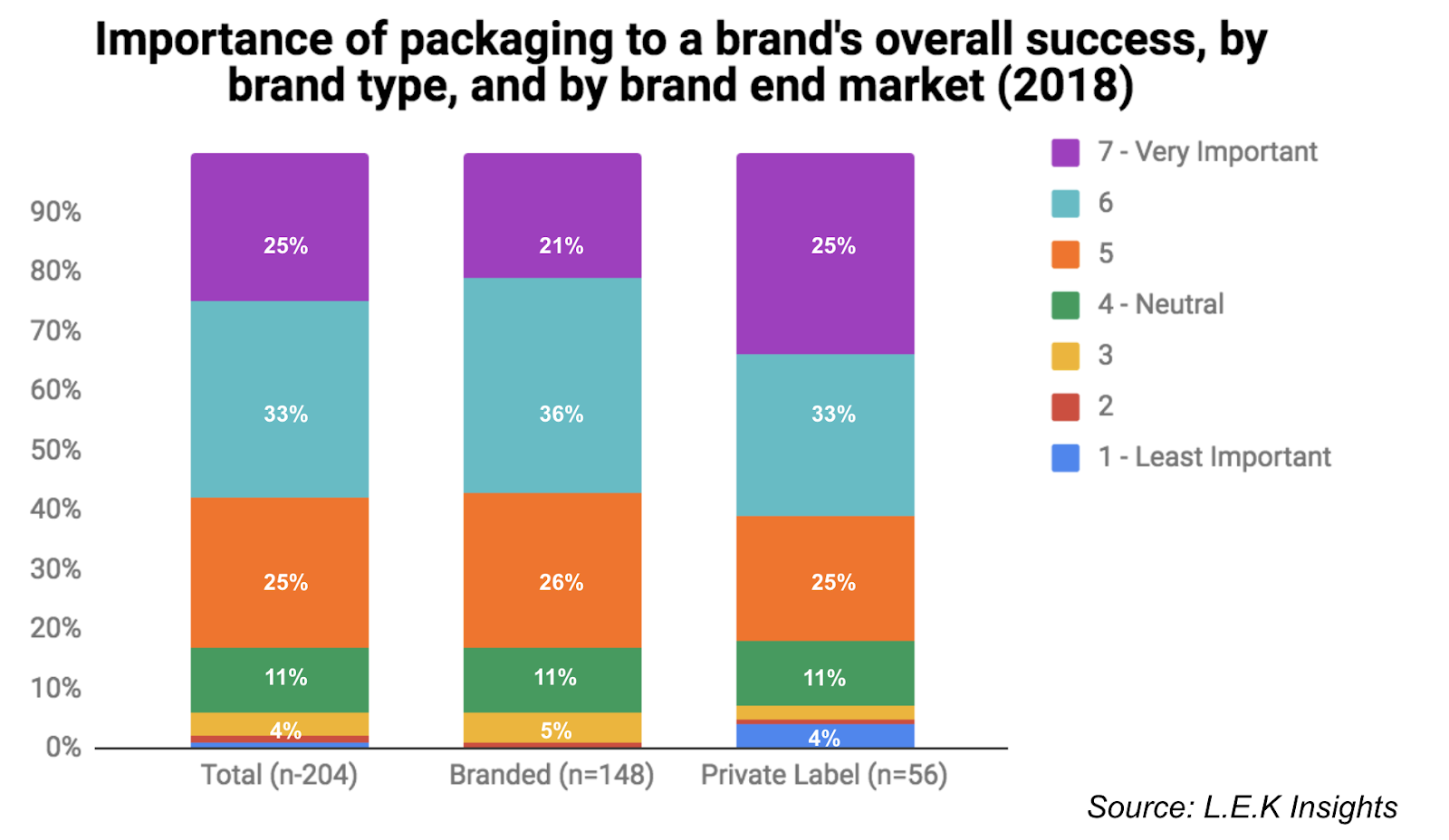SKU’d Thoughts 2: Can packaging continue to carry the CPG industry?
I started my career working within the packaging department at Kraft Foods and for the better part of my 4-year tenure, I was researching and prototyping innovative packaging technologies that would set our products apart from competitors on shelves. What stood out was how marketers valued and understood that a product’s packaging was a critical factor in enticing consumers. A 2018 L.E.K Consulting survey of 200 U.S. brand managers revealed 80% of them believe packaging is “important to their brand’s success”.
More than 80% of packaging brand owners responding to the survey reported that packaging is important to their brand’s success. Across end markets, beauty & personal care and food & beverage brand owners tend to see the value of packaging and its effect on their brand’s success the most, while it ranked less important to healthcare brand owners in comparison
At Big CPG, new product launches rarely mean true product innovation but instead as CircleUp’s Ryan Caldbeck noted in his “The Product Launch Fallacy Of Big CPGs” blog, CPG companies lean heavily on new packaging or varieties (think Cheez-It and White Cheddar Cheez-It). Based on the CPG category, packaging has historically accounted for between 13–51% of new product launches. As an example, the Cheez-It packaging evolution below, each packaging change would be considered a “new product launch” by the brand even if it was just a new way of marketing an old product.
It’s hard to blame CPG marketers for this sleight of hand because of the high importance consumers also place on the packaging. According to an August 2018 research by Ipsos Public Affairs, 72% of consumers say packaging can influence their decision to purchase.
So far, packaging has been holding up despite the pressure brands demand of it. First, the function of packaging was to simply store and deliver a product to consumers. Then, it had to also be sustainable and functional.
In terms of sustainability, most consumers now expect packaging to be recyclable, eco-friendly and produced with as little resources as possible, etc.. This trend is reflected by another L.E.K survey that reveals 40% of brand owners reported some change toward sustainable packaging in the past two years.
On the other hand, the functionality of a product’s packaging is still in its infancy. CPG companies are still in version 1.0 of packaging functionality (think detergent caps that double as measuring cups). The industry needs to think outside the box (literally and figuratively) to enter version 2.0 of real value-add packaging functionality similar to Apple’s AirPod case that simultaneously stores and charges the AirPods. From my time on the packaging front-lines at Kraft, I confirm this is no easy task. I had to balance all the bells and whistles we wanted to provide consumers with variables like cost and mass production. But for packaging to continue carrying the load for Big CPG, there needs to be more emphasis on version 2.0 of functionality. Without this upgrade, CPG startups have one more blindspot to fill in.
Cross-posted on Medium



